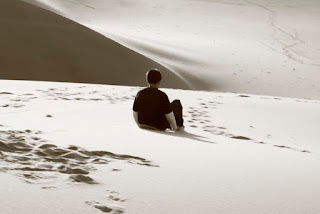 After finding out that our next stop (Huancacho) was part of the red zone (the French government advise 'not to go'), we changed our route - direction the coast: Huacachina. We passed the town of Nazca on the way, famous for its lines representing hundreds shallow designs - 70 of them are zoomorphic, the others are geometric shapes or simple lines. We did not stopped as the flight costs about $100 to be able to observe them. Choices have to be made during a 1-year trip... So we arrived in the unique oasis of South America... Huge sand dunes to climb to discover a desert. I really loved being up there. Buggy one afternoon with some sand boarding! Well, lying on the board head first as the dunes were impressive! I tried to sandboard but only managed the first dune. The second attempt could have been damaging... 3 days of real pain, I will remember. Good fun though!
After finding out that our next stop (Huancacho) was part of the red zone (the French government advise 'not to go'), we changed our route - direction the coast: Huacachina. We passed the town of Nazca on the way, famous for its lines representing hundreds shallow designs - 70 of them are zoomorphic, the others are geometric shapes or simple lines. We did not stopped as the flight costs about $100 to be able to observe them. Choices have to be made during a 1-year trip... So we arrived in the unique oasis of South America... Huge sand dunes to climb to discover a desert. I really loved being up there. Buggy one afternoon with some sand boarding! Well, lying on the board head first as the dunes were impressive! I tried to sandboard but only managed the first dune. The second attempt could have been damaging... 3 days of real pain, I will remember. Good fun though!A visit to the Islas Ballestas, the 'poor man's Galapagos'. Thousands of birds, penguins and sea lions... We also saw the Candelabro, a candelabra-shaped etching in the desert hills above the sea. Mysterious are all those lines/symbols found on the ground!
The origin of the Candelabro is unclear, and there are numerous theories about it. Some attribute it to the Chavín culture from the north of Peru, claiming that it is a drawing of a cactus, which was an important symbol of power. Others claim it has links with the Southern Cross, and some say it is linked to the Nazca Lines, about 200km to the south. However, most theories now attribute it to the 19 th century, saying that it was used as a navigational tool to guide sailors into the bay of Paracas . Some think it was used by General San Martín to guide his ships into Peru when liberating the country, while another theory is that it was used by pirates.
 |
| The Candelabro |


















No comments:
Post a Comment